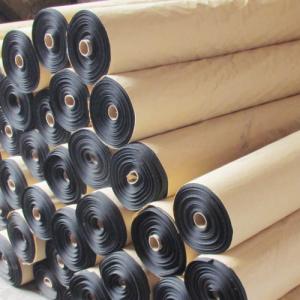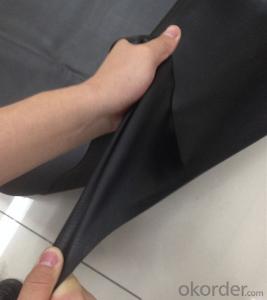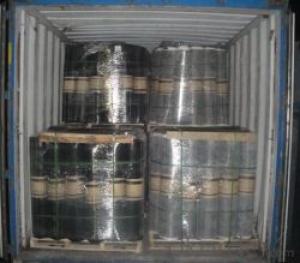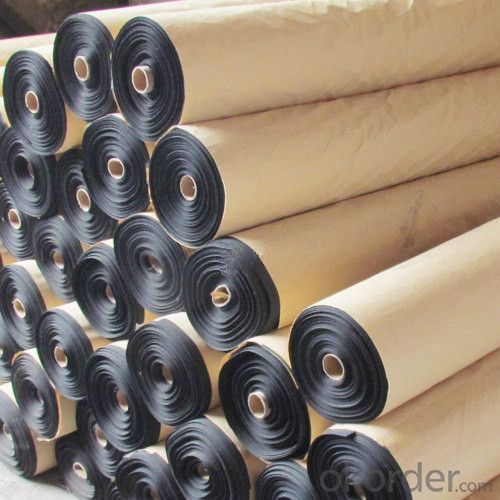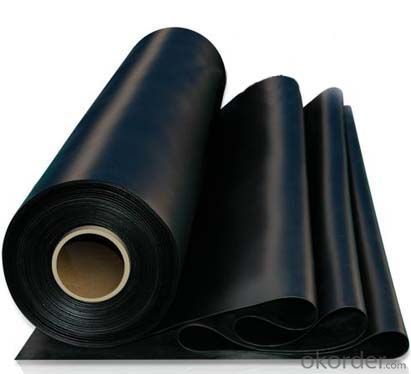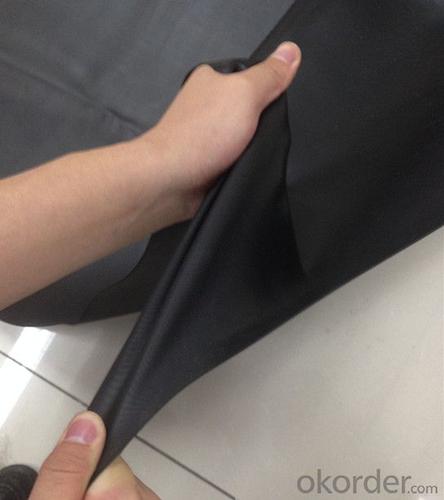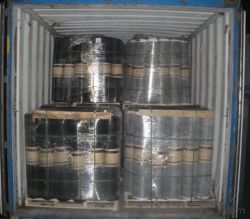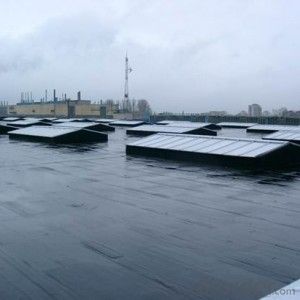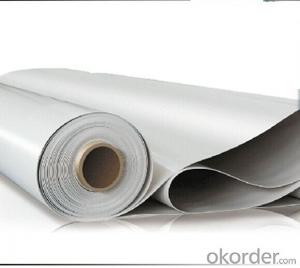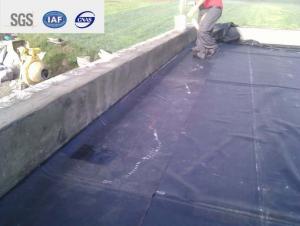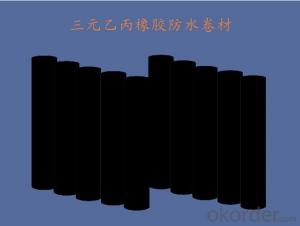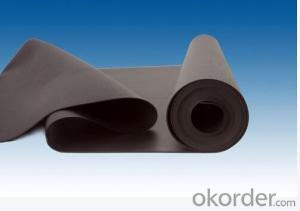Single Layer Roofing Vulcanized EPDM Waterproof Membrane Black Color for Roof and Basement
- Loading Port:
- Qingdao
- Payment Terms:
- TT or LC
- Min Order Qty:
- 3000 m²
- Supply Capability:
- 250000 m²/month
OKorder Service Pledge
OKorder Financial Service
You Might Also Like
Vulcanized EPDM Rubber Waterproof Roofing
Vulcanized EPDM rubber waterproof membrane for roof
Width: 1.2m.2m.3m,4m
Length: 20m
Thickness: 1.2mm/1.5mm/2.0mm
Color: Black
Profile of Vulcanized EPDM Waterproof Membrane :
Durability and ease of installation are two of the key reasons .
Single ply EPDM Roof systems are becoming commonplace in today flat roofing market. EPDM membrane is a flexible rubber material available in 45 mil, 60 mil and 90 mil thicknesses. With its superior flexibility, resistance to fire and high strength, EPDM can be applied in all sorts of climates.
1. EPDM waterproof membrane is made from ternary ethylene-propylene rubber, which is for waterproofing of exposed and non-exposed applications.
2. CNBM EPDM waterproof membrane production adopts the world-advanced equipment of cold feeding extrusion and continuous vulcanization technology.
3. EPDM waterproof membrane is of high elasticity among high polymer waterproof materials and a world-popular waterproofing material.
Features of Vulcanized EPDM Rubber :
1.The excellent anti-aging, in the long term light, humidity, cold use of the natural environment, small changes in physical properties, used in the temperature: From -50 degree Celsius to +80degree Celsious.
2. With outstanding ozone resistance, resistance to ultraviolet and atmospheric corrosion of many chemical corrosive substances.
3. High tensile strength, high elongation, high flexibility, capable of sustaining a puncture of hard material, good anti-crack, high adaptability of the grass roots' contraction and the crack and deformation, and give full play to extend the performance, playing the role of waterproofing.
4. Long lifetime, high durability can achieve more than 25 years.
5. The cold construction operation, no environment pollution and simple operation.
Applications of Vulcanized EPDM Rubber :
-Roof, basement, tunnel, pond liner, dam
-Industrial and civil building waterproofing
-Geosynthetic liner for fish ponds, swimming pools, channels, irrigation system
-Especially suitable for projects with high requirement in durability, anti-corrosion and deformation
Widely used in roofs, basement, toilet ,swimming pool, and all kinds of industry and civil building waterproofing, reservoir, vivicism, bridge, underground, tunnel and dam waterproofing ,especially to the keystone waterproofing projects which is durability, high corrosion resistance and easy deformation.
Specifications of Vulcanized EPDM Rubber :
-Width of roll: 1.2m, 2m, 4m
-Length of roll: 20m, 30m or customized
-Thickness of membrane: 1.2mm, 1.5mm, 2mm
-Type: vulcanized EPDM or welding EPDM
-Application: roof, basement, pond, lake, swimming pool, steel structure roofing, underground, tunnel, etc
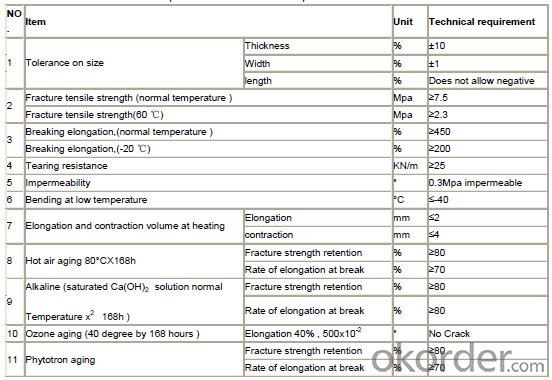
FAQ:
1. Is your EPDM waterproof membrane the real rubber?
Yes, our EPDM membrane is made from top quality rubber, which is imported from America. We support samples for testing, or testing in our factory.
2. How's your products quality?
Our EPDM is with the top quality at home and abroad. Our quality is much higher than Chinese standard. Our product is widely used in Chinese Central government projects. And it's also accpted by customers all over the world, such as EU, USA, Astrulia, etc.
3. What's the service life of your EPDM membrane?
The service life of our EPDM membrane is more than 50 years.
4.What's your MOQ?
Our MOQ is 3000M2.
5. What's your production ability of EPDM membrane?
We own the largest EPDM production line in China. Our product ability of EPDM membrane reaches 2 million square meter per year.
6.How many quantity in one 20'' container for 1.2mm and 1.5mm?
480rolls, 11520m2 for 1.2mm and 400rolls, 9600m2 for 1.5mm
Photos of Vulcanized EPDM Membrane:
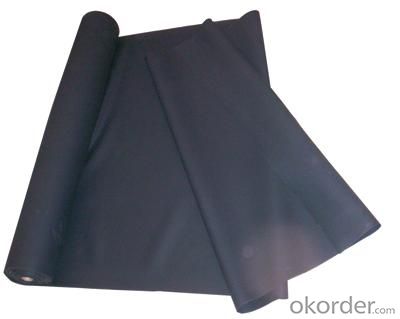
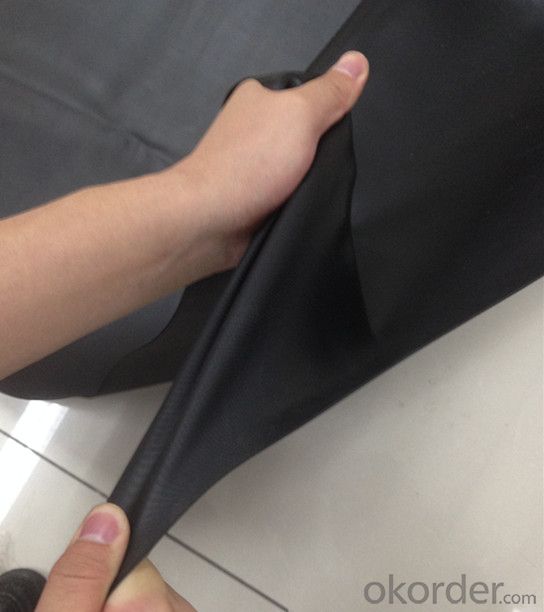
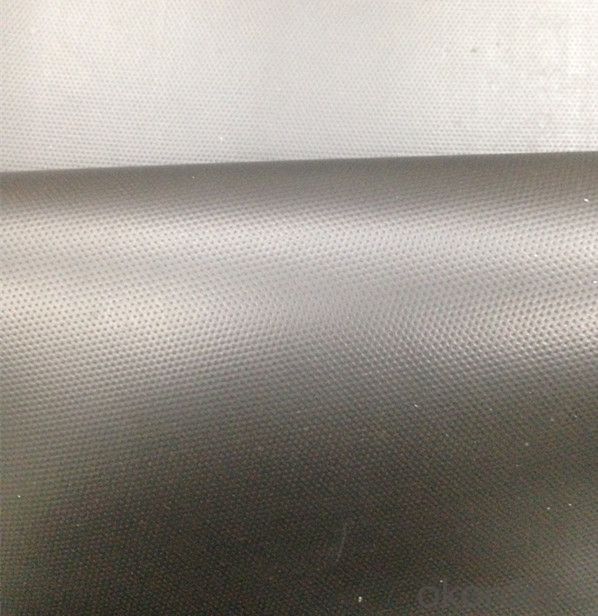
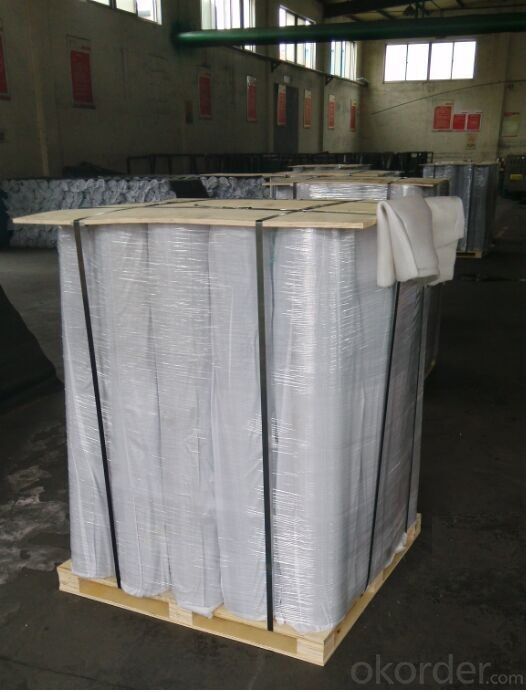
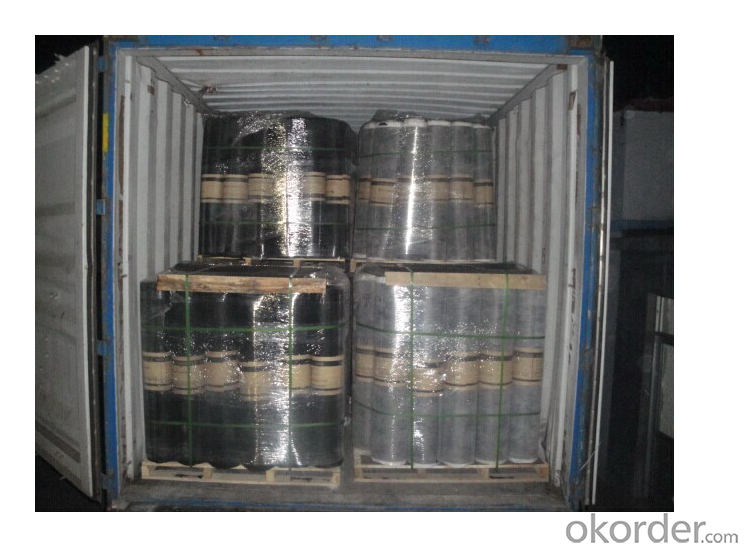
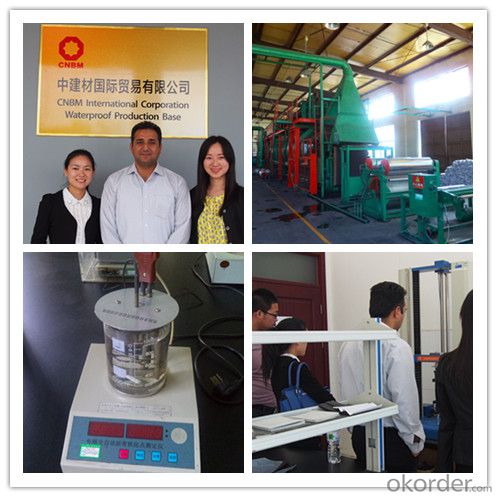
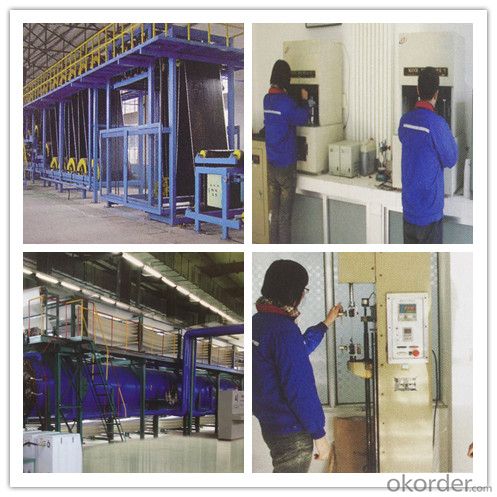
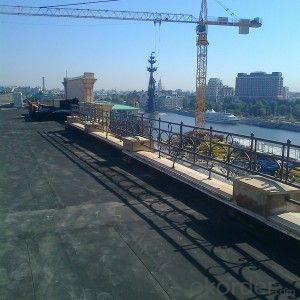
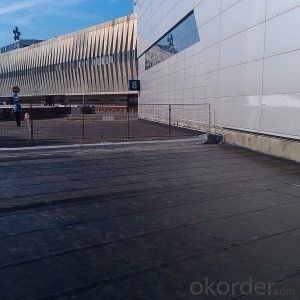
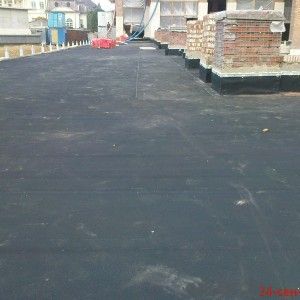
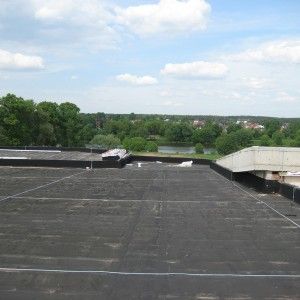
- Q: What are the common mistakes to avoid when installing a waterproofing membrane?
- Some common mistakes to avoid when installing a waterproofing membrane include inadequate surface preparation, improper selection of the membrane material, improper seam sealing, insufficient coverage or overlap of the membrane, and failure to test for leaks before covering the membrane.
- Q: Can waterproofing membranes be used on balconies?
- Yes, waterproofing membranes can be used on balconies. Waterproofing membranes are specifically designed to provide a protective barrier against water penetration, making them an ideal solution for balconies that are exposed to weather elements such as rain, snow, and moisture. These membranes are typically applied to the surface of the balcony to create a seamless, watertight seal, preventing water from seeping through and causing damage to the underlying structure. The use of waterproofing membranes on balconies helps to extend their lifespan, reduce maintenance costs, and ensure the overall durability and functionality of the balcony.
- Q: Can a waterproofing membrane be used for plaza decks?
- Yes, a waterproofing membrane can be used for plaza decks. Plaza decks are typically outdoor spaces that require protection from water infiltration to prevent damage to the underlying structure. Waterproofing membranes are designed to create a barrier that prevents water from seeping into the deck and causing issues such as leaks, deterioration, and structural damage. These membranes are often made of materials such as bitumen, rubber, or polyurethane, which are highly resistant to water penetration. By installing a waterproofing membrane on a plaza deck, it ensures that the deck remains watertight and protects the integrity of the entire structure. Additionally, these membranes can also provide added benefits such as UV resistance, durability, and ease of maintenance, making them an ideal solution for plaza decks.
- Q: Is a waterproofing membrane resistant to root penetration?
- A waterproofing membrane is usually able to resist root penetration. Its purpose is to create a barrier that prevents water from seeping through and causing damage to the underlying structures. These membranes are typically made from durable materials like modified bitumen, PVC, or EPDM, which are highly resistant to root penetration. Some membranes are even specially manufactured with properties that deter root growth, providing an extra layer of protection against potential root damage. Root-resistant waterproofing membranes may contain additives that discourage root growth, or they may have a thicker and stronger composition that can withstand root penetration. However, it is important to note that while waterproofing membranes are generally effective in preventing root penetration, proper installation and regular inspection are necessary to ensure their long-term integrity.
- Q: Can a waterproofing membrane be used for a green roof system?
- Indeed, a green roof system can utilize a waterproofing membrane. In truth, a top-notch waterproofing membrane is a vital element of a green roof system. These roofs are specifically designed to facilitate the growth of vegetation and necessitate a strong and dependable waterproofing barrier to deter water leakage and safeguard the underlying structure against moisture damage. A waterproofing membrane functions as a safeguarding layer, effectively sealing the roof and preventing water infiltration into the building. Moreover, the membrane aids in retaining water within the green roof system, ensuring that the plants receive an ample supply of water. Consequently, the integration of a waterproofing membrane into a green roof system is indispensable for its triumph and durability.
- Q: Can a waterproofing membrane improve energy efficiency?
- Yes, a waterproofing membrane can improve energy efficiency. A waterproofing membrane acts as a barrier against moisture intrusion, preventing water from seeping into the building envelope. By keeping the structure dry, it helps to prevent the growth of mold and mildew, which can contribute to poor indoor air quality and the deterioration of building materials. In addition to protecting against moisture, a waterproofing membrane can also provide insulation benefits. Many waterproofing membranes are designed to have a high thermal resistance, or R-value. This means that they can provide an extra layer of insulation to the building, reducing heat transfer through the walls or roof. By improving the building's thermal performance, a waterproofing membrane can help to reduce the load on heating and cooling systems, resulting in energy savings and improved energy efficiency. Furthermore, a waterproofing membrane can also help to reduce air leakage in a building. Air leakage can account for a significant amount of energy loss, as conditioned air escapes through gaps and cracks in the building envelope. By sealing off these areas, a waterproofing membrane can help to improve the building's air tightness, reducing energy loss and improving energy efficiency. Overall, a waterproofing membrane can play a crucial role in improving energy efficiency by preventing moisture intrusion, providing additional insulation, and reducing air leakage. Investing in a high-quality waterproofing system can lead to long-term energy savings, improved indoor comfort, and a more sustainable and efficient building.
- Q: Can waterproofing membranes be used on parking decks?
- Yes, waterproofing membranes can be used on parking decks. Parking decks are exposed to various weather conditions and are subject to constant vehicle traffic, which can lead to water penetration and damage. Waterproofing membranes provide a protective barrier against water infiltration, preventing moisture from seeping into the structure and causing deterioration. These membranes are designed to withstand heavy loads and resist the chemicals found in automotive fluids, making them an ideal solution for parking decks. By applying waterproofing membranes, the lifespan of the parking deck can be extended, reducing the need for costly repairs and ensuring the safety and integrity of the structure.
- Q: Does a waterproofing membrane affect the structural integrity of a building?
- Typically, the structural integrity of a building is not affected by a waterproofing membrane. Instead, the membrane is specifically designed to safeguard the structural components of the building by preventing water infiltration and subsequent harm. Acting as a barrier against water penetration, the waterproofing membrane ensures that the building remains dry and free from moisture-related issues such as mold, rot, or deterioration. By preserving the building envelope, the membrane aids in maintaining the structural integrity of the building and prolonging its lifespan. It is crucial to note that the installation of a waterproofing membrane must be executed correctly and in accordance with industry standards to guarantee its effectiveness and prevent any potential negative impact on the structure.
- Q: Can a waterproofing membrane be used on insulation surfaces?
- Yes, a waterproofing membrane can be used on insulation surfaces. It provides an additional layer of protection to prevent moisture infiltration and damage to the insulation material.
- Q: Can waterproofing membranes be used on roofs?
- Yes, waterproofing membranes can be used on roofs. Waterproofing membranes are specially designed materials that are used to provide a protective layer on roofs to prevent water penetration. These membranes are typically made of materials such as modified bitumen, EPDM, PVC, or TPO, which are highly resistant to water and can effectively seal the roof. They are commonly used in both residential and commercial applications, including flat roofs, low-slope roofs, and even sloped roofs with certain designs. Waterproofing membranes are applied in multiple layers to ensure maximum protection against water damage and can greatly extend the lifespan of a roof by preventing leaks and moisture buildup.
Send your message to us
Single Layer Roofing Vulcanized EPDM Waterproof Membrane Black Color for Roof and Basement
- Loading Port:
- Qingdao
- Payment Terms:
- TT or LC
- Min Order Qty:
- 3000 m²
- Supply Capability:
- 250000 m²/month
OKorder Service Pledge
OKorder Financial Service
Similar products
Hot products
Hot Searches
Related keywords
